The sermon In divini corporis sepulturam (CPG 3768; BHG 808e), attributed to Epiphanius of Salamis, is counted among the most curious Patristic works concerning the harrowing of hell. It was intended for liturgical reading on the Holy Saturday and is divided in two parts. The first of them is a praise to Joseph of Arimathea, who is presented as asking Pilate for the body of Christ in order to bury it. The second part recounts the harrowing of hell and contains a discourse of Jesus to Adam before the latter is released from Hades.
Although there is no argument for a genuinely Epiphanian authorship, the numerous versions in ancient languages shows the large diffusion that the work enjoyed in the Christian Orient. Clavis Patrum Graecorum lists various versions of this sermon in Syriac, Armenian, Georgian, Arabic and Old Slavonic.
The Greek text is available in Migne’s Patrologia Graeca vol. 43, coll. 439-464 (= Homilia II in Sabbato magno). André Vaillant[1] translated into French the Old Slavonic version and his critical edition can be downloaded below. Supplementary bibliographical details can be found in R. Gounelle’s book concerning Christ’s descent into hell.[2]
The numerous Egyptian Arabic manuscripts in which the homily In divini corporis sepulturam is preserved, indicate that it must have been a quite popular text among the Copts. Besides, one of the cathedral homilies of the patriarch Mark III († 819 AD), which survived in a Bohairic manuscript kept in the Vatican Library,[3] is merely a reworking and a paraphrase of ps.-Epiphanius’ text; it shows that a Coptic translation of In divini corporis sepulturam must have been in use already in the very beginning of the 9th century.
Indeed, some vestiges from a Sahidic copy of the homily in question can be found in two collections of Coptic manuscripts. They are the remnants of a dismembered parchment codex which belonged once to the library of the White Monastery, situated near Sohag. The codices of this monastery survived only as membra disjecta which are scattered today across the world.
 To date, I have been able to find from ps.-Epiphanius’ sermon a leaf which is in the Bibliothèque Nationale in Paris (call number BnF Copte 1315, f. 100), and two fragments from the British Library (BL Or. 6954[44]-[45]). The London fragments of In divini corporis sepulturam were mentioned by Bentley Layton in his catalogue of the Coptic manuscripts in the British Library as part of an “Apocryphal Work”.[4] It is possible that additional fragments will be found in the future.
To date, I have been able to find from ps.-Epiphanius’ sermon a leaf which is in the Bibliothèque Nationale in Paris (call number BnF Copte 1315, f. 100), and two fragments from the British Library (BL Or. 6954[44]-[45]). The London fragments of In divini corporis sepulturam were mentioned by Bentley Layton in his catalogue of the Coptic manuscripts in the British Library as part of an “Apocryphal Work”.[4] It is possible that additional fragments will be found in the future.
The Coptic witnesses presently known parallel the Greek text of ps.-Epiphanius’ homily as follows:
Paris 1315, f. 100 = PG 43, coll. 448C-449A
London BL Or. 6954(45) = PG 43, col. 457A-B
London BL Or. 6954(44) = PG 43, col. 460C-D
The manuscript is today dismembered but enough of it survived to establish that In divini corporis sepulturam was followed in the same codex by a sermon on the Ascension of Christ, attributed to Athanasius of Alexandria (CPG 2198; Clavis coptica 0446), and by ps.-Chrysostomos’ first homily on the Pentecost (CPG 4536).
We are especially fortunate that the last leaf of this codex has survived, for it contains a colophon. The colophon mentions that the manuscript was copied by the scribe Matthew in the Touton scriptorium in the year 656 Era of the Martyrs (939-940 AD). The codex was donated later to the White Monastery.[5]
We have thus a 10th century homiliarium patristicum which contained texts for three major moments of the paschal cycle: the Holy Week, the Ascension, and the Pentecost.
[1] A. Vaillant, “L’homélie d’Épiphane sur l’ensevelissement du Christ. Texte vieux-slave, texte grec et traduction française,” Radovi staroslavenskog instituta 3 (1958) 6-100.
[2] R. Gounelle, La descente du Christ aux Enfers. Institutionnalisation d’une croyance (Collection des Études Augustiniennes. Série Antiquité, 162; Paris: Institut d’Études Augustiniennes, 2000) 408.
[3] H. De Vis, “Homélie cathédrale de Marc, Patriarche d’Alexandrie,” Le Muséon 34 (1921) 179-216, and 35 (1922) 17-48.
[4] B. Layton, Catalogue of Coptic Literary Manuscripts in the British Library Acquired Since the Year 1906 (London: British Library, 1987) 110-111 (= no. 99).
[5] Cf. A. van Lantschoot, Recueil des colophons des manuscrits chrétiens d’Égypte (Bibliothèque du Muséon, 1; Louvain: J.-B. Istas, 1929) 88-90 (= no. LV).









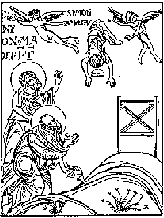




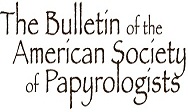
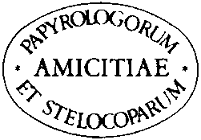
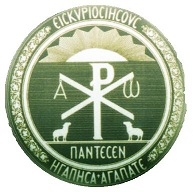





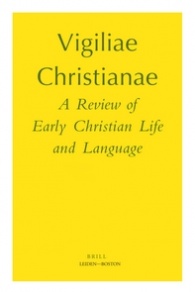






Pingback: The Identity of a Coptic Apocryphal Text in the British Library (Layton no. 100) | Alin Suciu
Stimate Domnule Suciu,
in descendenta unei alte lucrari atribuite lui Epifanie (ma refer la Omilia la Botezul Domnului, editata de Leo Depuydt, Encomiastica form the Pierpont Morgan Library, CSCO 544, Copt. 47, 1993, p. 22-45), dati-mi voie sa va intreb in ce masura imi puteti clarifica textul din Isaia 34, 15-16 asupra caruia elaboreaza autorul, text inexistent ca atare in LXX, insa prezent in Henry Tattam, Prophetae majores in dialecto linguae aegypticae memphitica seu coptica, edidit cum versione latina, vol. 1, Oxford, 1852 ,p 136. Ce istorie ati sugera in spatele pasajului?
Tattam, p. 137, traducere latina: Is. 34, 15-16: Ibi hericius peperit, et terra soboles ejus salvavit cum securitate: ibi cervi sibi invicem occorent, et viderunt facies inter se. [16] Transierunt in numero, et nullus ex eis periit: alter alteram non quaesivit; quia Dominus eis mandavit, et spiritus ejus ea congregavit
Cum nu am acces la baza de date a Prof. Tito Orlandi, v-as fi indatorat sa imi indicati versiuni paralele copte pseudoepigrafului epifanian.
cu multumiri,
Ionut Daniel Bancila
Humboldt Universität, Berlin
Va multumesc pentru comentariu, dar va voi raspunde pe larg dupa ce voi studia putin problema. La prima privire, pot spune ca versiunea bohairica a profetului Isaia publicata de Tattam nu ne este de prea mare folos pentru ca exista argumente literare care sugereaza ca omilia pseudo-epifaniana a fost compusa direct in sahidica. Cum stim ca traducerea bohairica a Bibliei s-a facut independent de cea sahidica, ar fi prin urmare necesar sa ne uitam la Isaia 34, 15-16 sahidic. Am comparat citatul inclus in omilia sahidica cu versiunea bohairica publicata de Tattam si, ca o confirmare, textele sunt diferite. Va voi spune mai multe dupa ce gasesc fie o editie, fie un manuscris care sa contina Isaia 34, 15-16 in copta sahidica.
Din cate stiu eu, singura copie a acestei omilii la Botezul Domnului se gaseste in codicele sahidic publicat in CSCO. Pot insa exista alte fragmente inca neidentificate.
Se poate ca acest text nu a avut o raspandire foarte mare in Egipt. Ceva mai bine reprezentata in manuscrise este o alta omilie la Botezul Domnului, atribuita lui Petru al Alexandriei.
Multumesc mult pentru raspuns. Astept cu interes rezultatul comparatiei dvs.
La o privire mai atenta, am observat ca textul corespunde de fapt LXX. In noua situatie, m-ar interesa, totusi, statutul textului din paragraful 9 al Omiliei, sugerat de Leo Depuydt, cu un semn de intrebare (Encomiastica, Versio, p. 20, nota 15).
Pingback: A New Fragment of the Life of Moses of Abydos (Formerly Attributed to a Homily on Penitence by Shenoute of Atripe) | Alin Suciu
Any speculations when this anonymous homily was composed?
Any speculations on when this anonymous homily was originally composed?